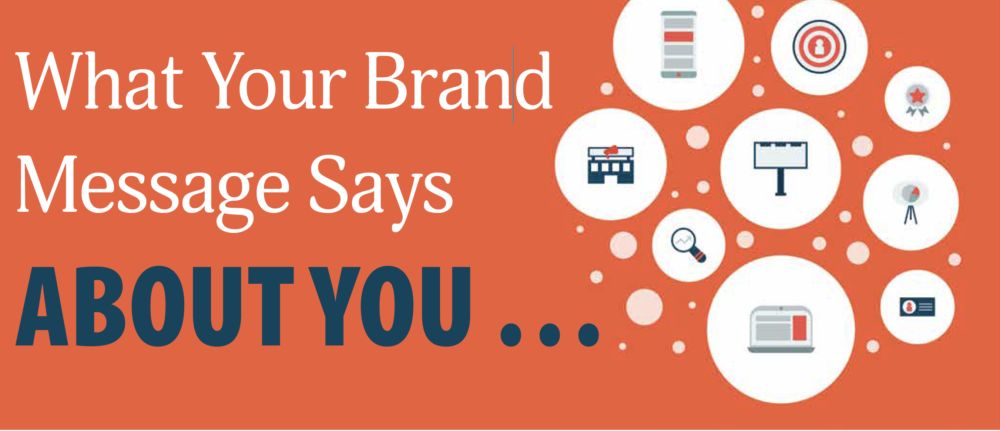
What Your Brand Message Says ABOUT YOU …
I was just reading about the once great Sears announcing a re-branding with a new logo, a new tagline — “Making moments matter” — and a new focus on “home and heart.” In my mind, this is a waste of time, effort and money because, although there’s nothing inherently wrong with re-branding, Sears has a poor reputation for execution, especially when operationally nothing else is changing. All you get when you put lipstick on a pig is a prettier pig!
And this got me to thinking about the importance brands play in setting expectations and connecting with the experiential and emotional needs of your customers.
A Healthy Exercise
Try this exercise with me. Think about the last five retailers you personally shopped. These could be your competitor’s stores, supermarkets, discount stores, warehouse clubs or any kind of category specialty store, such as a sporting goods retailer.
For each one of these retailers, ask and answer these questions:
• Were your pre-shop expectations met?
• What was your overall impression of the store — in-stock products, assortment breadth, service, presentation, checkout, lighting, and product quality?
• Were your needs met? Did you buy what you needed? Did you find the solutions you wanted?
• On a scale of 1 (low) to 5 (high), what was your overall impression of your entire experience?
• Would you go back again or recommend that retailer to a friend or family member?
Your responses to each of these questions drive your memory of your experience with that retailer, your satisfaction with the experience and determine your inclination to visit them again. In essence, you’ve just defined that retailer’s brand in your mind.
Too often in our industry, we’re so focused on the product we sell that we don’t take the time to manage our company’s own brands and brand message, leaving the determination of what our brand is to the customer, often to our detriment.
It’s a far better outcome for you to control your brand image, your brand message and brand expectations to the customer, rather than have them mentally create their impression of your brand in a vacuum.
Brands Defined
Let’s look at the classic definition of a brand. A brand is many things to many people. Some of it is perception or interpretation of the message you send, some of it is the result of the way you position the brand.
Basically, a brand is an implied promise to the purchaser. It may convey quality or image, performance or ease of use, value or prestige, trend or uniqueness, or combinations of all these messages.
A brand is an opportunity for the retailer to tell its story. A brand creates a personality, a cachet, a feeling or attitude in the purchaser’s mind that influences how they relate to a product and influences their buying decisions. A brand taps into the customer’s emotions and establishes two-way connections between the customer and the retailer.
Bottom line, the brand developed for a specific product, a program, a category or a retailer/ supplier builds expectations in the customer’s mind — expectations that are built over time and reinforced by their continual positive and negative experiences with the product or purchase venue. A level of trust evolves that is associated with the brand.
Achieving Success
So, what makes a successful retail brand? It’s not just the name or logo that made it successful — it’s that and far more. Retailers build their reputations and expectations or promises not only through their advertising and promotion efforts, but through all of the support given to the brand … the informative signage and POS; product information to help the purchaser enjoy the product and be successful with it; creative displays and presentations; exceptional product design and performance; superior customer service; differentiated packaging and more.
What the retailers really did was to control the total message sent to the purchaser to support how they wanted their positioning to be understood or perceived in context of their competitors and their products. And they worked to deliver on that promise or expectation over time, providing consistency, eventually building a high level of trust with them.
And what are the results of these efforts? Most of these programs and products realize higher repeat purchase loyalty, higher retails and higher profit margins, the bottom line goal of branding efforts. But this didn’t happen without a lot of thought put into the brand development and its positioning, to the details of the execution and at a financial investment.
The development of a brand is not a final destination; rather branding is an ongoing process. Like plants, brands need to be nourished, maintained and cared for to flourish and continue growing. Without regular care, a brand will wither and die and the time, effort and monetary investments you’ve made in it will realize no benefit.
Consumer Benefits
And there are benefits for the consumer in the retailer communicating a clear, concise brand message to them. It sets well-defined expectations; offers confidence in the products and services offered; makes it quicker and easier to buy; helps avoid the clutter of choices; resonates with their values, tastes and needs; communicates social and environmental accountability; “guarantees” success; and demonstrates a value to the consumer.
The products you sell in your garden centers are transformative. If the Sears re-branding example illustrates the disconnect between the brand message and the delivered reality, here’s another example of a re-branding initiative that will be a huge success — Lululemon.
This retailer is the founder and leader of the athleisure trend, a purveyor of high-quality (and high-priced!) yoga pants, fitness clothes and leisurewear. Strategically, they want to change people’s lives by encouraging customers to embrace the Sweatlife philosophy of leading a healthy, mindful lifestyle focused on three elements:
• Sweat — basically, reaching fitness goals
• Grow — personal development and becoming one’s best self through meditation, restoration and recovery
• Connect — creating bonds with others to build something bigger than we can alone for a wider community focus.
Lululemon is reconfiguring its stores, re-training teams, changing advertising and marketing … bringing the physical stores and communications in synch with its new brand message, with the result that the company will be able to deliver on the new brand expectations it set for their customers.
The products you sell in your garden centers are transformative. They have the power to improve lives and lifestyles, and enhance quality of life, much like Lululemon sees it doing for its customers.
But is that the brand message you’re communicating? Is that the focus of your marketing and advertising? If not, you may not be connecting with the basic values and needs of your customers, or developing that all-important long-term relationship. Make the time to really think about what your brand message says about you …

















 Videos
Videos





